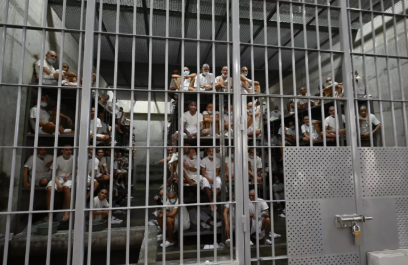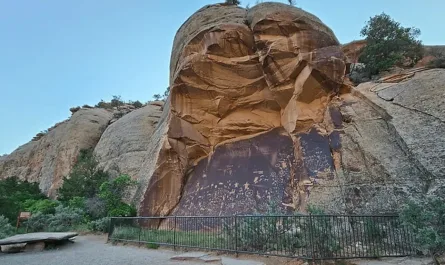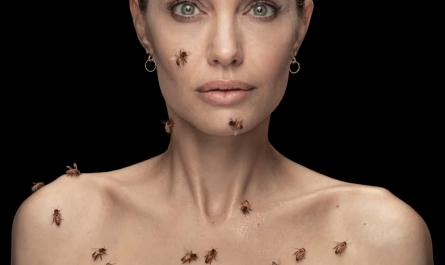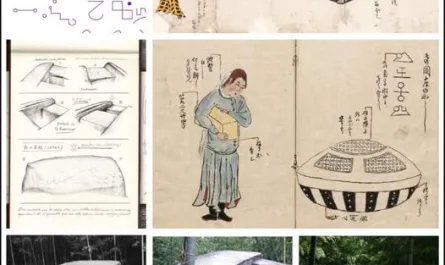Nestled at 1500 North Liberty Street in Independence, Missouri, the Vaile Mansion, completed in 1881, stands as a masterpiece of Second Empire Victorian architecture. Built for Colonel Harvey M. Vaile and his wife, Sophia, this 31-room estate is renowned for its opulent design and chilling ghost stories. From its hand-pressed red brick facade to its spectral residents, the mansion blends historical grandeur with paranormal intrigue, drawing history buffs and ghost hunters alike for a hauntingly unforgettable experience.
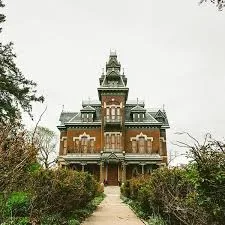
Architectural Splendor
Designed by Kansas City architect Asa Beebe Cross, the Vaile Mansion embodies the Second Empire style, inspired by a chateau the Vailes admired in Normandy, France. Its symmetrical facade features a three-story central tower, mansard roofs with multicolor slate shingles, and ornate limestone trim. The 5.6-acre estate, once spanning 630 acres with vineyards and orchards, boasts a one-story porch, tall narrow windows, and intricate bracketed cornices, earning praise from the 1882 Kansas City Times as “the most princely house and the most comfortable home in the entire west.”
Inside, the mansion dazzles with 14-foot ceilings painted by European artists, nine marble fireplaces (one costing $1,500), and two chandeliers originally intended for the White House. Innovations like indoor plumbing—fed by a 6,000-gallon water tank, a first in Jackson County—speaking tubes, gasoliers, and a 48,000-gallon wine cellar highlight its modernity. The grand staircase, crafted in black walnut with Eastlake and Gothic details, and a scandalous ceiling mural in the master bedroom, “Innocence,” depicting a semi-nude woman, add to its allure. The mural, painted by an Italian artist, sparked Victorian-era gossip, alienating Sophia from local society.
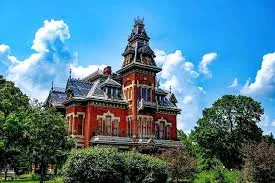
A Tragic History
Harvey Vaile, a Vermont-born lawyer and entrepreneur, amassed wealth through the Erie Canal, Star Route mail contracts, and land investments. The mansion, costing $150,000 (about $4.7 million today), was a testament to his success, hosting senators and dignitaries. However, tragedy struck during the Star Route scandal (1882–1883), where Vaile faced fraud charges but was acquitted after costly trials. In 1883, while Harvey was in Washington, D.C., Sophia, diagnosed with stomach cancer, died of a suspected morphine overdose in her second-floor bedroom, possibly a suicide. Harvey, devastated, lived reclusively until his death in 1894. The mansion later served as an inn, asylum, water bottling facility, and nursing home, nearly facing demolition before Roger and Mary Mildred DeWitt’s restoration efforts in the 1960s. Donated to the City of Independence in 1983, it’s now a historic museum run by the Vaile Victorian Society.
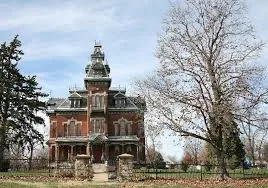
Ghost Stories and Paranormal Activity
The Vaile Mansion’s eerie reputation stems from its tragic past and reported hauntings. Visitors and paranormal investigators describe:
Sophia Vaile’s Spirit: A woman in white, believed to be Sophia, is frequently seen on the second floor, especially near her bedroom where she died. Guests report her ghostly figure peering from windows or wandering halls, accompanied by cold spots, moving objects, and eerie whispers, suggesting a restless spirit tied to her tragic end.
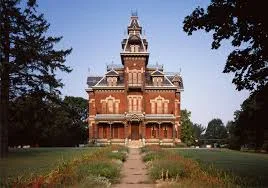
The Angry Basement Entity: A malevolent male presence in the basement manifests through disembodied voices, loud bangs, and electronic voice phenomena (EVPs). Full-bodied apparitions have terrified investigators, some of whom fled, dubbing the mansion one of Missouri’s most haunted sites.
The Young Man’s Ghost: On the third floor, the spirit of a young man, thought to be a former sanitarium patient, roams restlessly. Shadow figures, footsteps, and dark shapes on the grand staircase add to the mansion’s chilling atmosphere.
These stories, amplified by ghost tours and media like Whispers from the Past and books like Haunted Missouri, make the mansion a hotspot for paranormal enthusiasts. Guided ghost hunts, especially around Halloween, draw crowds seeking to experience its spectral activity firsthand.
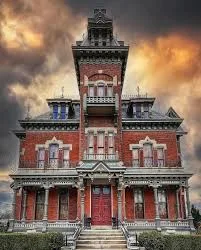
Lessons from the Vaile Mansion
Echoing the ingenuity of the Dahomey Amazons’ cornrow maps, the Vaile Mansion’s blend of architectural brilliance and adaptive reuse (from asylum to museum) reflects creative resilience. Its lessons include:
Preserving Heritage: The mansion’s restoration by the DeWitts and the Vaile Victorian Society shows the power of community in safeguarding history, inspiring efforts to protect cultural landmarks.
Embracing Complexity: Like the Amazons’ covert strategies, the mansion’s dual identity as a historical gem and haunted site teaches us to embrace multifaceted narratives, blending fact and folklore.
Courage in Adversity: Sophia’s tragic story and the mansion’s survival through neglect mirror the Amazons’ defiance, encouraging resilience in facing personal or societal challenges.

A Hauntingly Beautiful Destination
Today, the Vaile Mansion welcomes visitors for tours (10 a.m.–4 p.m. Monday–Saturday, 1–4 p.m. Sunday, closed December 23–25), with holiday events like the Victorian Christmas transformation showcasing its ornate interiors. Its National Register of Historic Places listing (1969) and ongoing preservation ensure its legacy endures. Whether drawn by its Second Empire elegance, intricate murals, or spine-chilling ghost stories, the Vaile Mansion offers a unique journey into Missouri’s Victorian past, where history and mystery intertwine in every shadowy corner.
